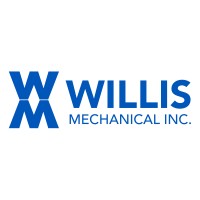
Willis Mechanical
Willis Mechanical, Inc. incorporated in 2002 to provide outstanding customer service on construction projects specializing in mechanical systems, and excellence in HVAC Maintenance and Service. Our company performs in the Commercial, Industrial and Institutional sectors, both for new construction and retrofit. Areas of expertise include: Heating, Ventilating, and Air Conditioning (HVAC) Service Process Piping Orbital Welding Plumbing






